
The London marathon fast approaching. But while runners will be (understandably) focused on completing the 26.2miles and getting across that finish line, it’s important not to forget the risk of potential running injuries.
They can affect anyone, according to the NHS, from experienced runners who push themselves to beginners whose muscles are not used to running.
Common injuries include: knee pain, sprained or tight ankles, pain in and around the backside, hamstring tightness or strain, calf tightness or strain, tense shoulders, painful hip flexors, groin pain, lower back pain and foot pain.
To combat the issue, sports therapist Jamie Webb from Brighton Sports Therapy has revealed 11 stretches and exercises for helping to prevent injury.
“They are designed to help you avoid the mistakes many runners make,” he told The Huffington Post UK. “They address issues at their root cause and will be more effective than a change of trainers.”
1. Lumbar Extension
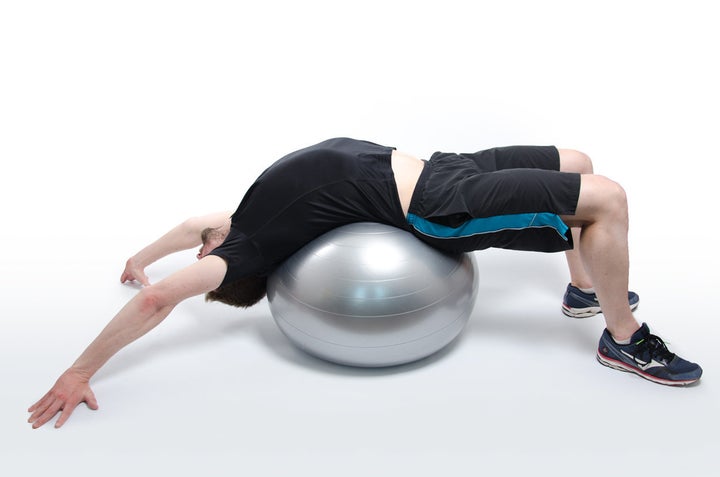
Jamie says: “This stretch is a super charged hip flexor stretch. It stretches the hip flexors and the muscles that affect their function. This will help with making your quads feel less heavy when you’re running. It’s also good for knee issues.
“Ideally this should be performed over the back of a Swiss Ball but if you don’t have one you can use the back of the sofa or edge of a bed.”
How to do it:
:: Arch backwards over the Swiss ball (or whatever you are using) and let the arms and legs hang in a relaxed fashion. You should feel a stretch through your stomach. You may get a sensation in your back also - as long as this is not painful, carry on.
:: Hold for a minimum of one minute.
2. Single Leg Raise
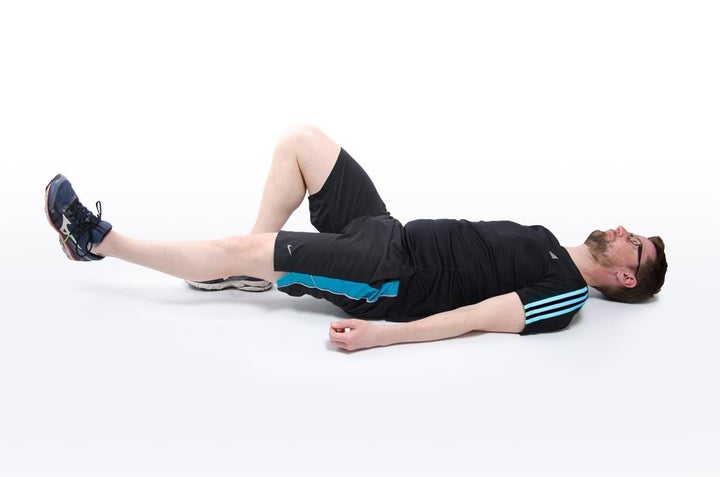
Jamie says: “This exercise will improve performance and reduce the risk of injury.”
How to do it:
:: Lie on your back with one leg straight and one leg bent.
:: Use your core muscles to push the arch of your back flat against the floor.
:: Place a hand under the side of the back to make sure there is constant downwards pressure.
:: While maintaining the downward pressure, lift one heel about six inches off the floor.
:: Hold for about 30 seconds and then put it back to the floor.
:: If you can, maintain the same pressure on your hand under your back and repeat on the other side. (If you found the first bit really hard then have a breather first.)
:: Repeat three times on each side.
3. Half Moon
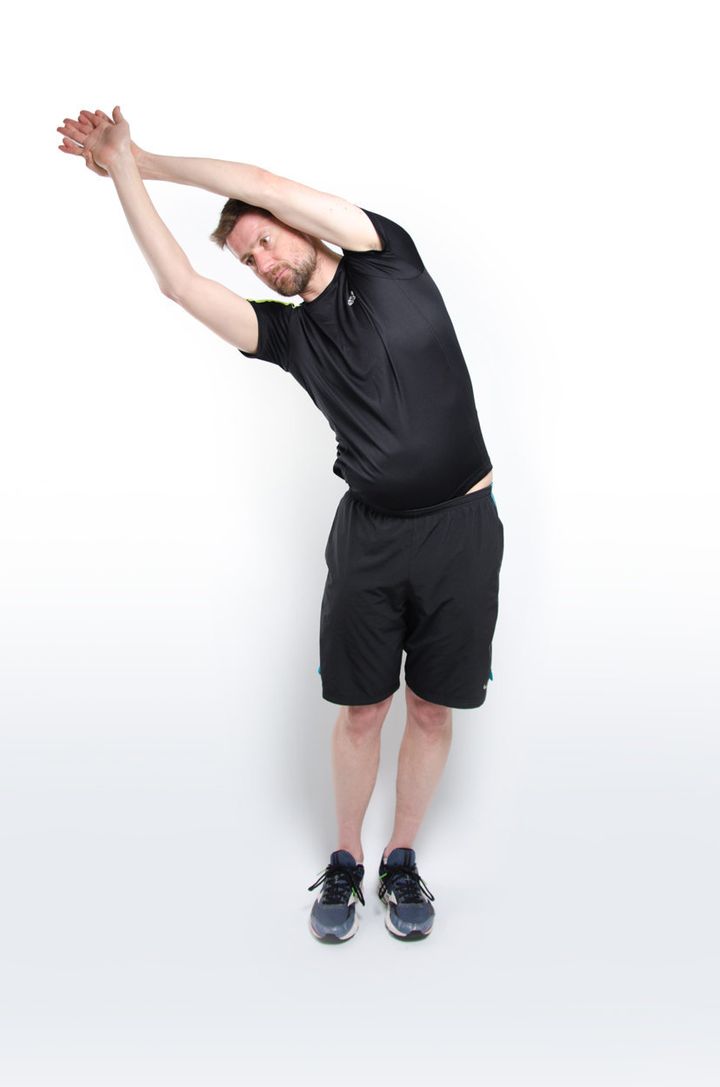
Jamie says: “Another great one for those who struggle with tight quads or knee pain. When the quads are doing too much work, your obliques on the same side will tighten.”
How to do it:
:: Stand upright with your hands above your head.
:: From this position bend over to the side – making a half moon shape. You may feel the stretch anywhere along the outside of your body. (If you feel a compressive sensation on the side to which you are bending then try the other way first and see if that eases the compression.)
:: Hold each stretch for a minute on each side.
4. Quad Stretch With Pelvic Tilt
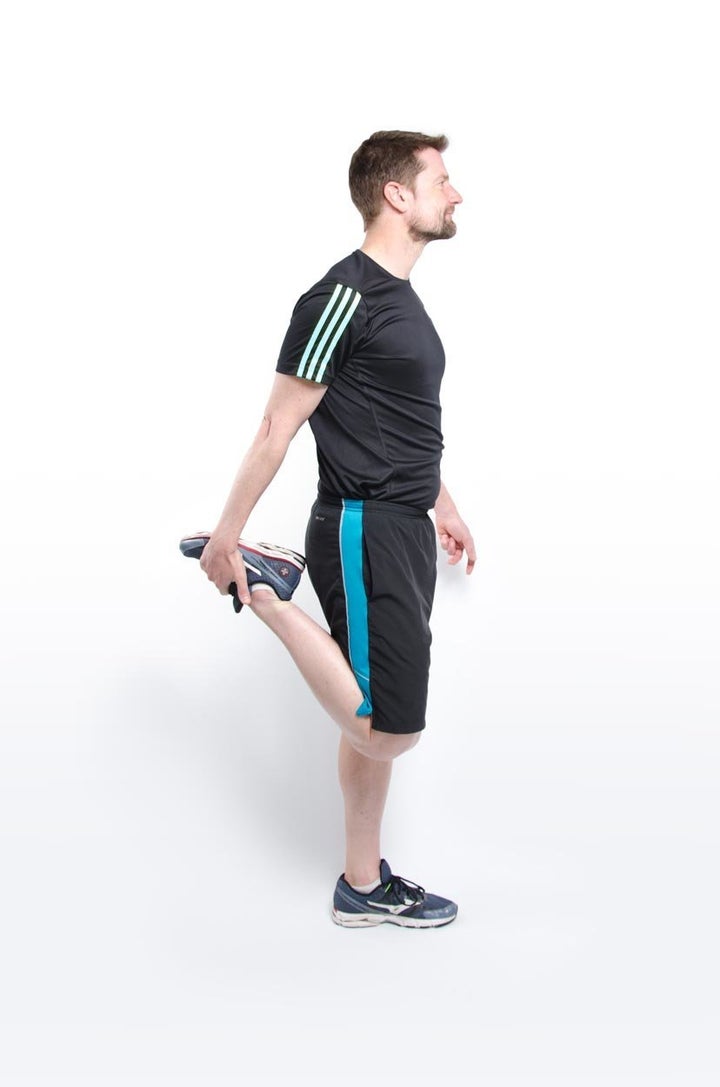
Jamie says: “Just a little tweak on an old favourite to make it more effective and tie in the other hip flexors. It is great for tight quads and knee pain.”
How to do it:
:: Pull your foot up behind the backside to get to the point where you start to feel a stretch in the quads.
:: Push the pelvis up and out, like a pelvic thrust. This should increase the stretch through the quadriceps and in the hip region.
5. Quad Extension
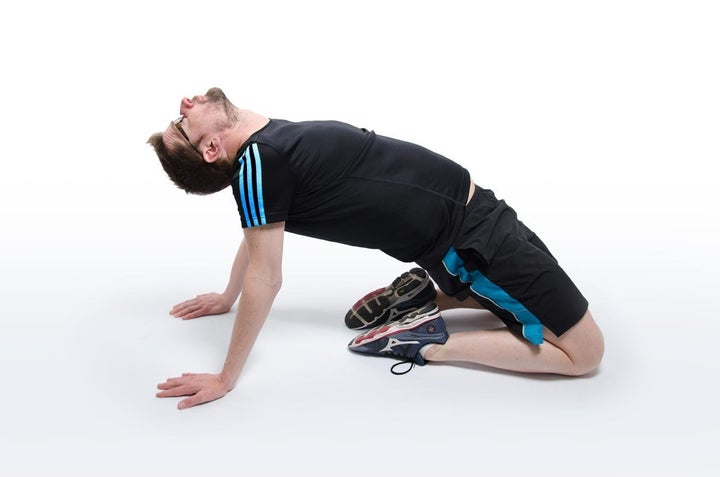
Jamie says: “This is a progression on from the last exercise. Some people are more flexible than others so the previous stretch may not have hit the spot.
“This not only stretches the quads but also the muscles which work with the quads to affect their efficiency.”
How to do it:
:: Start by sitting on your heels on the floor.
:: Reach your hands out behind you to open up your pelvis and place your hands flat on the floor behind you.
:: If you need to increase the stretch push the pelvis upwards until the stomach is flat, as shown.
6. Hamstring Stretch

Jamie says: “This is a fairly standard stretch with a twist to make it more effective.”
How to do it:
:: Start by placing the foot on something about table height (flexible people will need something higher, others will need something lower).
:: When the foot is up on the table in front of you, lean forwards with your upper body to bring the stretch on.
:: Come back to upright. This time rotate the foot outwards and then lean in again. You will feel the stretch in a slightly different place – it may be tighter, it may be more loose.
:: Come back to upright. Then rotate the foot inwards and repeat.
:: Find out which stretch is ‘hitting the spot’ best for you and focus on that one.
7. Neck Stretch
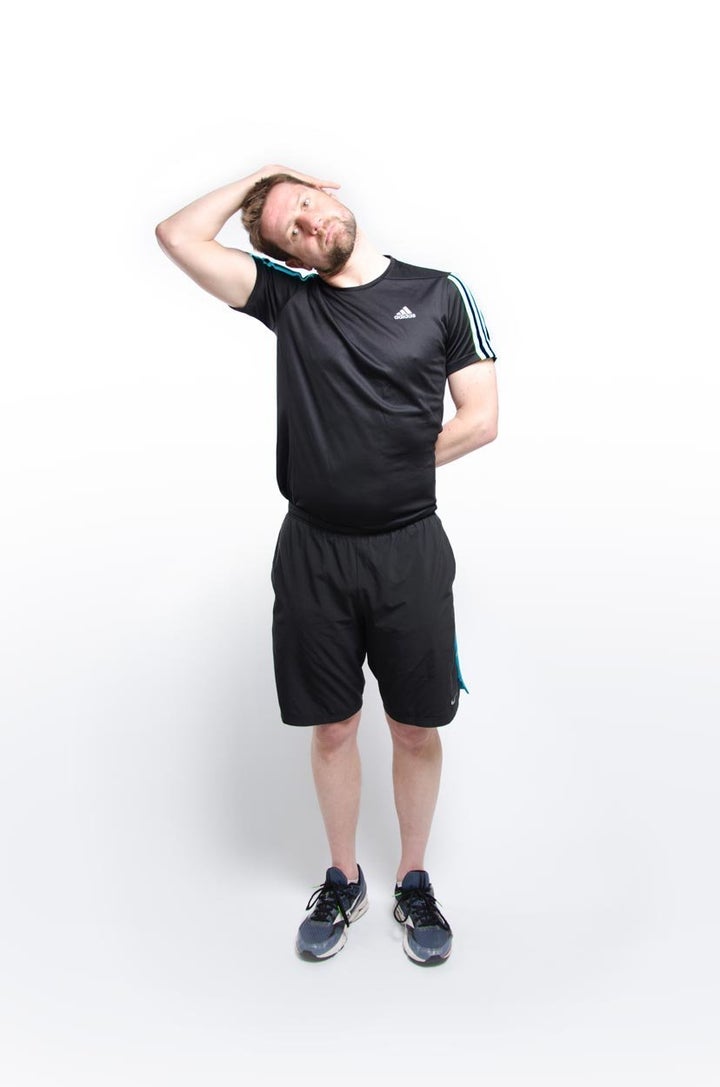
Jamie says: “Some runners run with too much tension which can result in a tight neck and shoulders. Biomechanically this has a knock-on effect and can affect your hamstring length and glute strength.”
How to do it:
:: Simply stand, bow your head to the side and apply pressure with your hand downwards (as per the picture above).
:: You should feel a stretch at the back of your neck. You may even feel the stretch spreading lower down your back.
:: Hold for about a minute and repeat a couple of times.
8. Calf Stretches

How to do it:
:: The standard stretch is to lean against a wall and take your leg out behind. While keeping the heel down, lock your knee straight and this will stretch your calf.
:: From this position bring the foot slightly forward – turn the toes inwards slightly and bend at the knee.
9. Glutes Stretch
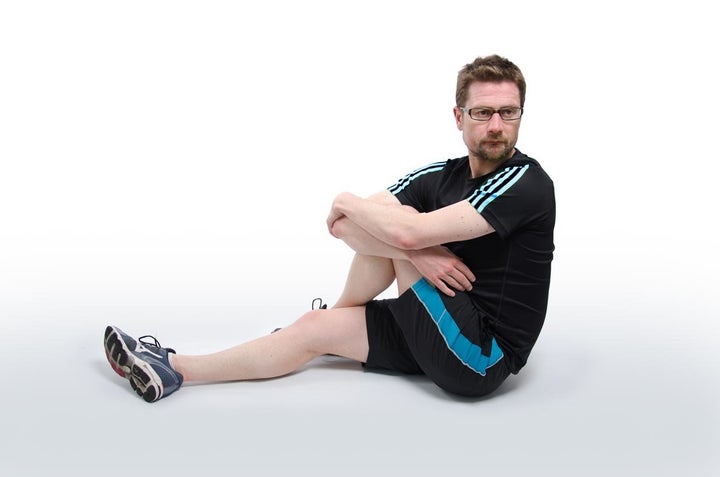
Jamie says: “Tight glutes limit the amount of force you can generate as part of the push-off phase of running and so affect your performance. Equally if the glutes are tight, the hamstrings and calves will compensate which can lead to tightness and potential issues as a result.”
How to do it:
:: Sit on the floor with one leg out straight in front of you.
:: Bring your opposite foot across your thigh just above the knee and put the foot flat down.
:: From here, hug the knee into the opposite shoulder. You should feel a stretch in your glutes.
:: If you wish to increase the stretch, rotate your torso to the same side you are stretching.
10. Peroneal Stretch

Jamie says: “These are the muscles on the outside of your shin which help with balance. If you have flat feet these will be tight.”
How to do it:
:: Support yourself against a wall.
:: Roll your foot outwards slightly (i.e. hold the inside of your foot in the air).
:: Now push your knee forwards (front leg shown in picture) while keeping the weight on the outside of the foot.
:: This should stretch around the outside of the ankle and into the muscles on the outside of your shin.
11. Adductor Stretch

Jamie says: “Good balance between the adductor group and the hip abductors (glutes) is key for pelvic, knee and ankle stability.
“It also has a profound effect on the femoral nerve (the nerve that gives sensation in the knee) and so is great for anyone with tight quads and also those with niggles in the knees.”
How to do it:
:: To start, lift the leg on a table/chair as shown in the picture above.
:: This time rotate the foot inwards completely so your inside ankle bone is on the table/chair.
:: Now drop down by bending the leg you are standing on to increase the stretch to a suitable level.